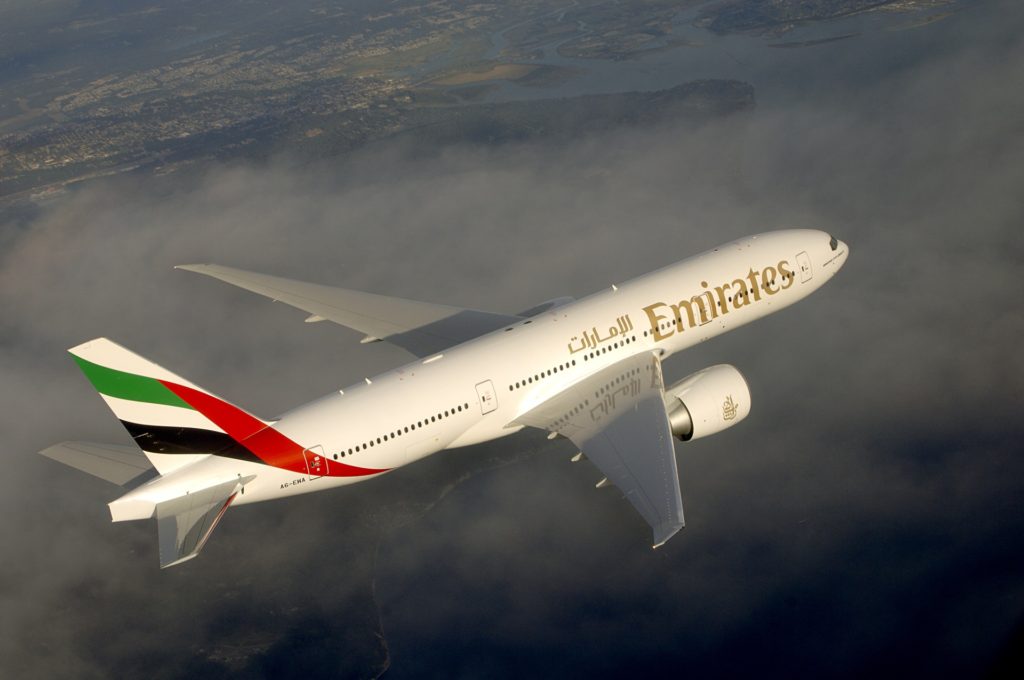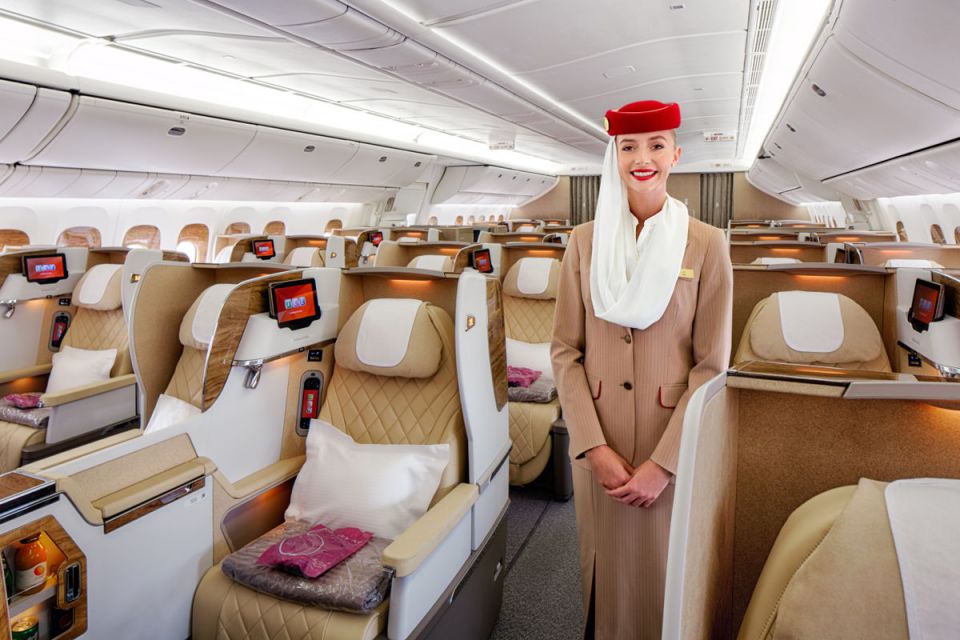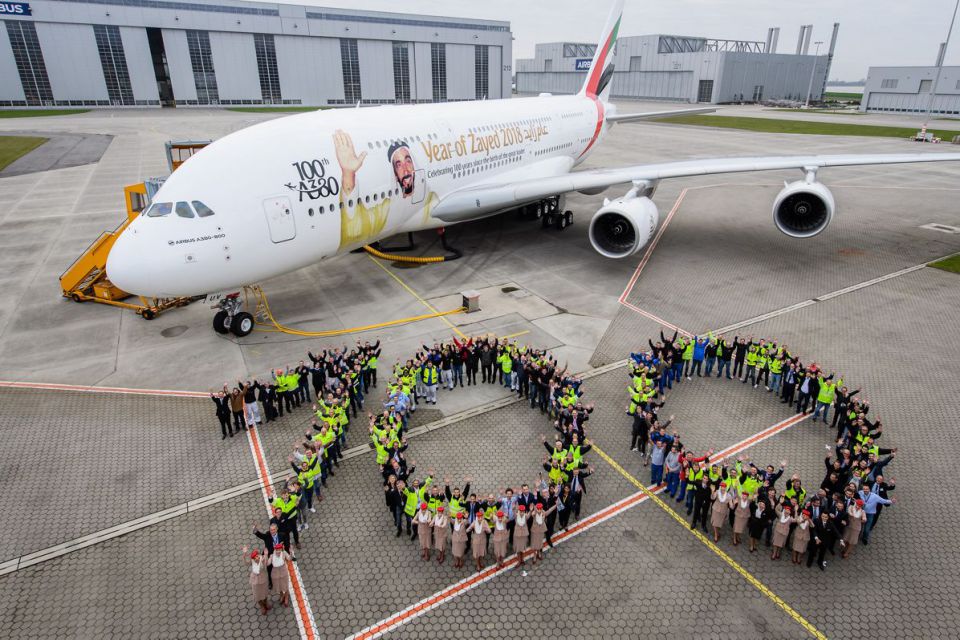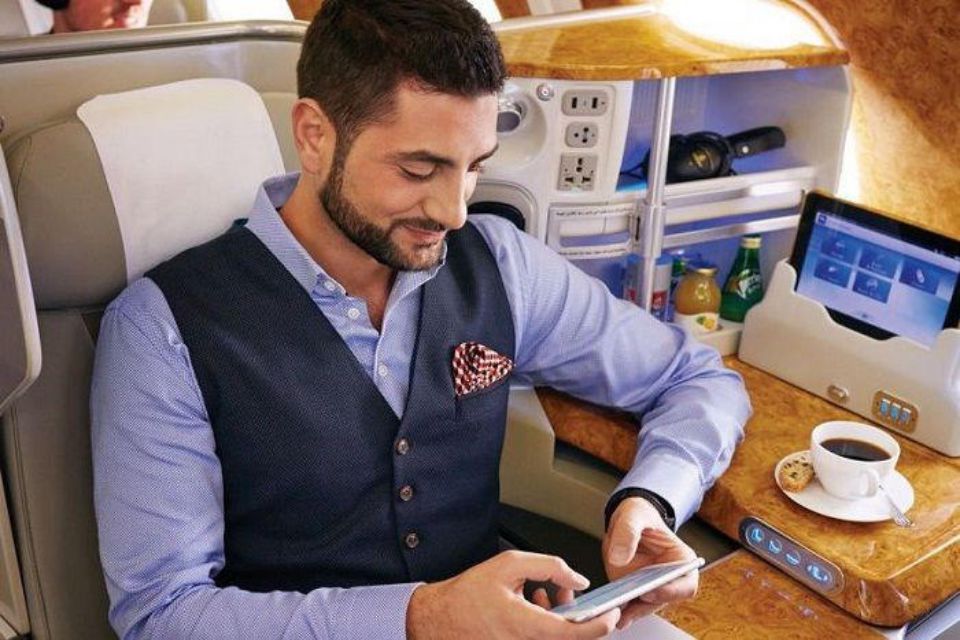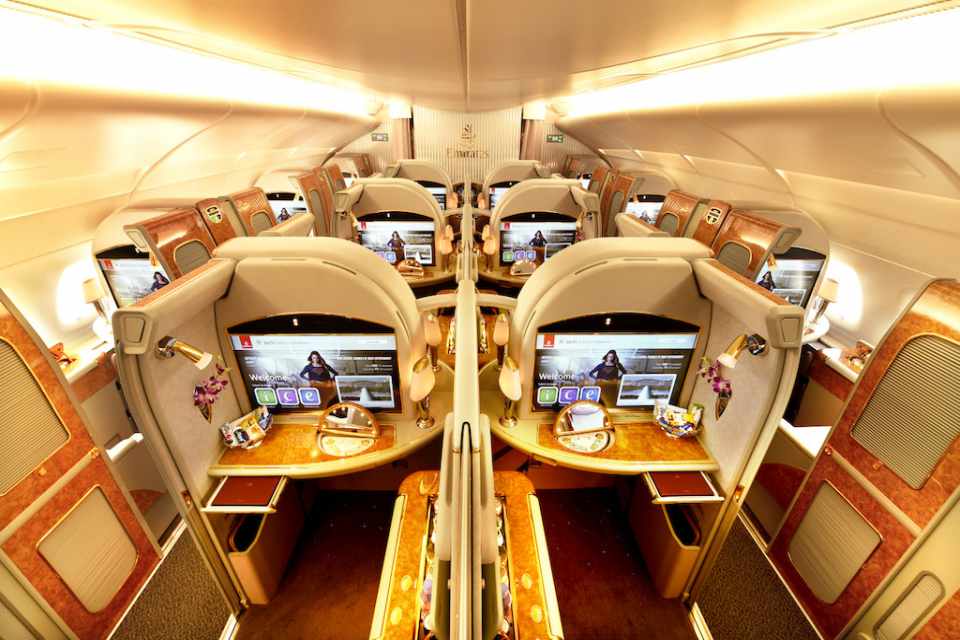Aviation
10 Effective Leadership Traits of Emirates that contributed to the airline’s steady growing market
Emirates was founded in 1985, with the first flight from Pakistan’s Karachi to Dubai using the EK code. Even though it does not rank first in the SkyTrax or Airline rating rankings, it still rules supreme.

When it comes to the Middle East, the Emirates is at the top of the list, with the Arab flag proudly displayed on aircraft. and the majority of the Gold theme features used for the cabin interior. It is not only about how luxurious the airline appears but also about how the airline handles its position.
Emirates was founded in 1985, with the first flight from Pakistan’s Karachi to Dubai using the EK code. Even though it does not rank first in the SkyTrax or Airline rating rankings, it still rules supreme.
The fundamental tenets of every organization are its guiding principles and set of operating procedures. With the exception of COVID time each year, Emirates is one of the airlines in the world that upholds excellent standards in all of its endeavors in the aviation sector. In fact, the airline contributes 13% of the GDP of its country.
In this article, we’ll learn how Emirates Airlines operates profitably and efficiently. These are a few of the ten things that make it a stronger competitor in the airline business or what we might refer to as the king of all airlines.
1. Better Service Commitments and lower cancellation rates.
Emirates has a strong understanding of the market and makes preparations early on based on economic projections. The aviation industry is being hammered by the post-COVID abrupt increase in air travel demand, which causes disruption and makes it impossible for airports like Heathrow to accommodate such high numbers of people. since the flights were reduced by European and UK airports.
By rehiring and retraining 1,000 A380 pilots in the previous year, Emirates has already made preparations to be able to meet consumer and travel demands.
Due to a staffing shortage and other infrastructure issues, London Airport reduced the number of flights, which emirates had already pre-planned for. However, emirates objected the reduction and made additional requests, which resulted in the relocation of emirates airline flights to other airports in London, including Heathrow, Stansted, and Gatwick. Emirates continued to meet demand by running numerous flights on the Boeing 777 and Airbus A380 to London.
Emirates has reportedly been ranked as one of the world’s most dependable airlines, with about 85% of its flights arriving on time. It had the fewest cancellations of any airline, 0.23 percent.
2. During the busy season, there are no impacts of the union strike.
However, Emirates had no problems, allowing the operation to run smoothly and effectively. While other airlines are feeling the pressure of the workforce due to union strikes, which led the airline to adjust the financial structure for the year, emirates did not.
According to data on airline operations, the organization is most impacted by union strikes and unforeseen external circumstances that affect airport capacity. The majority of the time, it is brought on by a lack of effective employee communication. In the instance of Emirates, it ensures the staff receives the majority of the benefits as well as a backup plan in case they are affected by situations like strikes or other external circumstances. This requires a greater knowledge of the employees.
3. Emirate’s ability to manage passengers is exceptional.
Its consistent use of proper fleet plans and a high passenger handling capacity are two things that might be commended. When the Airbus A380 was first introduced, Only 13 airlines bought aircraft in fewer quantities, and few retired them early, but no one dared to purchase one since most were concerned about the demand for passengers and the airline’s credibility. However, the Emirates made the decision long ago to order larger aircraft and a younger fleet, including the Airbus A380. It actually paid off for the airline because Emirates still requests that Airbus create larger, more effective aircraft, but Airbus no longer produces the A380.
Emirates already has a strong understanding of the market and consistently favors flying wide-body aircraft, which are in high demand. The Emirates deploys the Airbus A380 and operates it at a lower altitude than the Boeing 777 aircraft, which are both sufficient for carrying people wherever demand is stronger.
4. UAE government participation and leaders.
Emirates is supported by the government of the United Arab Emirates, and every organization relies on the leadership’s sound judgment in running the business. Tim Clark, who joined the airline in 1985 and later served as its Head of Airline Planning, is crucial to the emirate’s expansion. Tim Clark also served Sri Lankan Airlines from the time of the emirate’s takeover in 2008 till that time. He currently serves as the president of Emirates Airlines. In the industry, his vision and dedication to the airline are always valued.
The government of the United Arab Emirates has consistently invested in the airline and airport sectors, elevating them to a top position globally and outpacing the growth of some countries’ aviation industries, which have been in operation for more than 50 years. This shows that the government of the UAE believes in the future success of the Arab economy.
5. Development of Emirates products and brand value
There is little uncertainty that a product’s ability to survive depends on both its unique branding and customer-drawing design. Emirates Airlines is at the top of the list in this instance. They have the freshest fleet and change their cabin interiors every 5-7 years if you get inside one of their aircraft. Recently, it pledged to invest $2 billion in cabin products; however, no airline in the world would do so; instead, it would invest in new facilities. However, emirates are aware of the investment benefits.
In a recent interview, it stated that it would continue to offer first-class amenities like private cabins and bathrooms, even though they do not help the airline make additional profits from space in cabins. However, they do help Emirates maintain its leading position in the market by providing customers with value for their money.
Emirates Airlines pioneered some of the most advanced features of inflight entertainment, and it is always introducing something new in its aircraft cabin, whether it is a regional food menu or inflight entertainment. It’s business and first-class cabins have distinctive features that entice passengers to choose the airline.
Emirates has a strong presence at the most prestigious community festivals and sporting events. As a result, it is a more popular and in-demand aircraft in the airline industry.
6. Workplace culture at Emirates
Emirates, on the other hand, employs a diverse workforce from more than 150 different countries, and they are deployed according to the cultures and origin operations or mixed stages. The majority of airlines prefer to hire people of their own nationalities, and occasionally this leads to the choice of the better-experienced people on board that distinct characteristics of every airline.
The credibility of the airline is enhanced by diversified workplace culture. Additionally, the majority of airlines receive good benefits about which they never moan, and they also extend offers to employees before they ask for anything in return.
The airline has an in-house training and university program that allows employees to advance in their careers while also bonding with the airline. and the system created by this airline ensures that everything is standard.
Emirates provides its employees with benefits such as comprehensive health plans and paid maternity and sick leave. Another strategy employed by Emirates is to use profit sharing and merit pay as part of its competency-based approach to performance management.
7. There is no service outsourcing
Emirates has its own service facilities, which saves a lot of money, aids in the expansion of the company and the hiring of additional personnel, and it has more control over demand and pricing points. Since modifications to the airline’s own services may not have a significant impact, product changes can occasionally result in varying costs for the rates.
Emirates has diversified into related industries and sectors, including airport services, engineering, catering, and tour operator operations. Emirates has seven subsidiaries and its parent company has more than 50 ventures.
8. Modern technology and environmental protection
According to the most recent report, Emirates maintains its fleet at the highest level possible, including the attractions, and uses the most advanced technology.
“Tailored arrivals” is a program that Emirates has funded. This enables en-route aircraft to uplink with air traffic control. In order to fly a continuous descent profile and conserve fuel and emissions, it first calculates the speed and flight profile from the air onto the runway.
9. Emirates doesn’t have any Airline Alliance.
Of course, with so many destinations, they were never in need of an airline alliance or other backing from another airline to help them form a group of airlines. Alliance also involves financial investments for sustaining the alliance partnerships and has curtailed certain airline flexibility. Some airlines will gain from it in some way.
Emirates has collaborated with other airlines but is not a member of any of the three global airline alliances – Oneworld, SkyTeam, or Star Alliance. In 2000, the airline briefly considered joining Star Alliance but opted to remain independent
10. Emirates airline is the brand representative for Dubai tourism.
In order to keep its brand among the top 500 companies in the world, Emirates continues to spend in sports and events that attract larger crowds of fans. Dubai was nonetheless referred to as a local tourist attraction. Emirates established itself as one of the event’s primary sponsors. In Dubai, Expo 2020 was held. To commemorate the occasion, Emirates revealed a new livery in the three hues related to the event’s themes of opportunity, sustainability, and mobility. That a large number of tourists visit Dubai is entirely due to the emirates.

Aviation
Tejas and C-390 Millennium: India and Brazil’s Defense Trade Vision
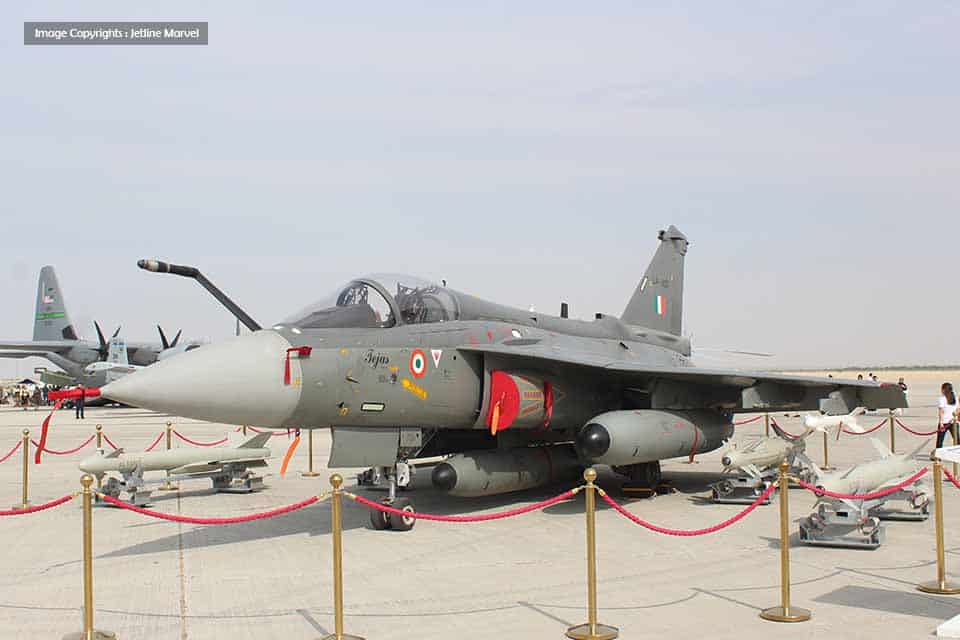
India and Brazil are exploring a mutually beneficial deal to enhance their defense product exports. There are indications that this potential agreement could include the exchange of fighter jets, essentially functioning as a barter system. For example, India has a long-standing offset policy requiring foreign defense companies to reinvest a portion of their contract value back into India through technology transfer or other reciprocal benefits.
Many countries engage in such exchanges to support each other’s defense industries, thereby strengthening national policies and economies. A notable example is the barter deal between South Korea and Indonesia, where South Korea sold its T-50 jets to Indonesia in return for defense-related goods and trade advantages.
India-Brazil defence mutual benefits
If the India-Brazil deal comes to fruition, it could provide mutual benefits, as both nations are in need of advanced platforms. Brazil is well-known for its Embraer aircraft, which ranks as one of the top three manufacturers of private and commercial jets. However, Brazil lacks expertise in fighter jet production, and this deal could provide the exposure needed to enter the fighter jet market.
In 2014, Brazil made a significant purchase of 36 Gripen fighters, with deliveries expected by 2027. Brazil is also producing Gripen fighter jets at its Embraer plant, with SAAB and Embraer collaborating to enhance the performance of the Gripen aircraft further.
India Faces Shortage of Military Aircraft Materials
Currently, India faces a shortage of medium military transport aircraft and is seeking to acquire more. The C-130J and C-17 Globemaster, along with the Russian IL-76, are currently in service. However, the production of the C-17 has been halted, making it unavailable in the market, while the IL-76 is experiencing maintenance challenges due to a shortage of spare parts.
Air India Might Operate Tata-Made New Airbus C295 Aircraft
India is currently seeking a reliable partner for military transport aircraft, and the Embraer C-390 Millennium stands out as an ideal fit. If a deal between Brazil and India materializes, it could yield significant benefits for both nations.
Embraer C390 payload capacity
The Brazilian Air Force is the largest in the Southern Hemisphere and the second largest in the Americas. Embraer proudly presents the C-390 Millennium as the future of military transport aircraft, featuring a payload capacity of 26,000 kg. This makes it a compelling choice, especially since it outperforms the C-130J Super Hercules, which has a payload capacity of 19,000 kg. Given India’s interest in enhancing its military capabilities, it’s clear why experts believe that discussions around this aircraft could lead to a significant agreement.
This international airline is offering free flight tickets to Indian travelers
Brazil operates the Gripen E fighter jet, which is expected to expand its fleet in the near future. However, the Tejas fighter jet has certain advantages over the Gripen. For instance, the Tejas features a quadruple digital fly-by-wire system that offers greater redundancy and safety compared to the single FBW system in the Gripen. Additionally, its use of composite materials reduces its radar cross-section, and its wide duct air intake enhances performance. Notably, the Tejas can take off in as little as 460 meters, significantly shorter than the Gripen’s 800-meter requirement.
Tejas and Gripen E Engine
Both jets are equipped with advanced avionics and electronic warfare systems, but the Gripen does hold some advantages with its more powerful GE F414 engine. The Gripen has a better payload capacity and maximum takeoff weight, and the optimized F414 engine provides superior thrust, enhancing agility and aerial engagement capabilities. However, the F404 engine of the Tejas is cheaper to maintain and operate compared to the F414.
With a maximum capacity of 26 tonnes, the C-390 surpasses the C-130’s 19-tonne capacity. Additionally, the C-390 is equipped with both probe and drogue systems, allowing it to refuel fighter jets and even serve as a tanker—capabilities that the C-130J does not offer. If India and Brazil decide to collaborate on the C-390’s production, it could be a game-changer for both nations.
India could potentially modify the C-390 aircraft for combat roles, such as launching long-range subsonic cruise missiles. This adaptation is feasible, as evidenced by the U.S. using its MC-130 to launch AGM-158 missiles.
India’s collbration with TATA & Airbus C295
Currently, India, in collaboration with Airbus, is producing around 56 aircraft for defense purposes. This milestone strengthens India’s defense capabilities, as spare parts will be more accessible due to local production and support. The C295 aircraft plays a crucial role in boosting regional connectivity and transporting troops and essential military supplies.
Furthermore, the C-390 could function as a drone mothership for deploying India’s swift and stealthy drones, providing a cost-effective solution that maximizes operational capabilities. However, challenges related to self-survivability, precision strikes, and operations in contested environments need to be addressed. If these challenges can be resolved, this concept could significantly enhance India’s long-range strike capabilities.
Similarly, manufacturing the Tejas MK1 in collaboration with Brazil would bring substantial benefits, especially for Brazil. Their mutual membership in BRICS could foster deep cooperation, defense technology sharing, and industrial development. By partnering on the Tejas program, Brazil’s aerospace industry could enter the fighter aircraft segment, leading to advancements in knowledge transfer and the establishment of local supply chains.
Reducing reliance on India for fighter maintenance and support, the C-390 Millennium would significantly enhance India’s logistical and operational capacity. Meanwhile, the Tejas MK1A offers Brazil an affordable yet effective solution to bolster its air combat capabilities, further deepening the strategic ties between the two nations.
-

 Aviation2 months ago
Aviation2 months agoMicrosoft Flight Simulator Raises $3 Million to Bring Back the An-225 Mriya
-

 Airlines2 months ago
Airlines2 months agoQatar Citizens Can Travel to the United States Without a Visa
-

 Aviation2 months ago
Aviation2 months agoQatar Airways bans these new Electronic Devices on plane
-

 Defence2 months ago
Defence2 months agoWhich Country Has the Largest Fleet of Fighter Aircraft?
-

 Airlines6 days ago
Airlines6 days agoDAMAC Air: Dubai’s New Luxury Airline Offers Free Flights for Registration
-

 Airport2 months ago
Airport2 months agoWestern Sydney Airport Welcomes Its First Plane After 6 Years of construction
-

 Airlines4 days ago
Airlines4 days agoAir India to Launch aircraft maintenance training institute in Bengaluru
-

 Aviation2 months ago
Aviation2 months agoDid you know ? Once Boeing 747 carried 1088 passenger in 1991

